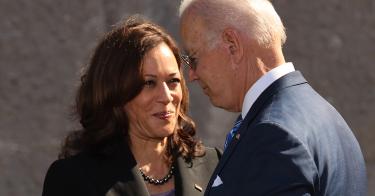President Joe Biden and Vice President Kamala Harris’ free community college plan will increase costs for both students and taxpayers.
Fortunately, the Biden-Harris promise of free community college appears less likely to make it into the final version of the Build Back Better Act, the $3.5 trillion tax-and-spend plan currently under debate in Congress.
The proposed provision for tuition-free community college would dole out $109 billion in grants to states so that students can attend two-year colleges without paying tuition. Taxpayers would foot the tuition bill starting in 2023.
Currently, the average sticker price for community college in the United States is about $3,000. However, the average cost per student is actually close to $18,000. Most of the discrepancy accounts for state and local appropriations and federal grants to the institutions. The rest consists of smaller grants and appropriations.
Moreover, most students who need financial assistance already receive it via Pell Grants as well as state and institutional grants. Accounting for financial assistance, the national average amount paid by students for tuition and fees at public two-year colleges is -$220, meaning that many students actually receive more than the cost of attendance in student aid. The Build Back Better program would mostly benefit those who are already covering the relatively modest cost of community college on their own.
With taxpayers already covering most of the cost of this investment in the form of direct appropriations and grants, do we see benefits of these drastic subsidies of community college?
Community college completion rates are abysmal. According to the National Center for Education Statistics, only 16.3% of students at two-year institutions graduate in two years, with 28.7% completing their degree in three years, and 34.2% completing their two-year degree in four. These statistics suggest that it could be more beneficial for students to spend those years getting work experience rather than a degree.
Since the advent of widely available federal government subsidization of higher education beginning in 1965, there have been massive increases in tuition prices without a corresponding increase in access or quality. Further subsidization under the Build Back Better plan will continue to inflate prices and shift the increased costs onto taxpayers.
Free community college will also continue the trend of degree inflation. More subsidies lead to more graduates—but not more skills—which leads to the need for more degrees to differentiate oneself. As the Cato Institute’s Neal McCluskey explains:
The average college degree has come to represent less and less human capital, as college attendance, fueled in large part by government aid, has skyrocketed. Exacerbating the situation, employers—who bear none of the costs themselves—have been increasingly able to demand degrees, which have largely become signals of basic attributes, such as persistence, baseline intelligence, and little more … One piece of evidence supporting the signaling hypothesis is an increase in employers calling for college degrees in advertisements for jobs that previously did not require the credential—and for which the needed skills appear largely unchanged.
“Free” community college will exacerbate this phenomenon. For example, while a high school diploma was sufficient for 26.2% of human resources specialist jobs in 2004, it was sufficient for only 8% by 2015. Most human resource specialist positions now require applicants to possess some form of higher education, even while the job duties remain largely unchanged.
The cost of “free” community college will also add to the mounting $28.9 trillion national debt, the burden of which is placed on taxpayers.
If the data surrounding community college is not enough, we have the example of free college in Europe foreshadowing what will likely happen here in the U.S. In Europe, taxpayer-funded “free” higher education has resulted in overcrowding, reduced access, and fewer academic resources per student. Institutions improve with increased competition, not through government intervention and subsidies.
Rather than building back bureaucracy through massive new federal subsidization of an underperforming higher education sector, Congress should move in the opposite direction: Policymakers should reduce federal subsidies in higher education across the board, which will reduce costs and make space for more effective free market financing solutions.
Americans need options for gaining employable skills. Picking winners and losers in higher education by dramatically increasing government subsidies is not the way to achieve that goal.
There is no such thing as a free lunch, nor is there any such thing as free community college.
This piece originally appeared in The Daily Signal



